Amazon FBA for Beginners: Step by Step Guide

Table of Contents
- Introduction
- What Is Amazon FBA?
- How Does Amazon FBA Work?
- Understanding Amazon FBA Fees: How Much Does Amazon FBA Cost?
- What Percentage Does Amazon FBA Take?
- Is Amazon FBA Worth It?
- The Pros and Cons of Amazon FBA
- Pros
- Cons
- Understanding Amazon FBA Business Model Options
- Private Label
- Wholesale
- Online Arbitrage
- Retail Arbitrage
- Dropshipping
- Handmade
- Considering Alternatives to Amazon FBA
- Amazon FBA Step by Step: How to Get Started
- 1. Create a Seller Account
- 2. Identify a Product
- 3. Source That Product & Ship to Amazon Warehouses
- 4. Build and Optimize Your Product Listings
- 5. Run Amazon PPC Ads
- 6. Build Reviews
- 7. Monitor
- 8. Test New Products & Scale
- Key Recommendations to Be Successful With Amazon FBA
- 1. Be Willing to Invest 10-20k
- 2. Sell High-Quality Products
- 3. Price Your Product Competitively
- 4. Provide Excellent Customer Service
- 5. Set Up Amazon Brand Registry & the Amazon Vine Program
- 6. Manage Inventory Closely
- 7. Leverage A+ Content & High-Quality Product Images
- 8. Run Ads to Achieve Sales Velocity
- 9. Ask for Reviews to Improve Your Listing Quality
- Conclusion
Introduction
Do you find yourself wondering what FBA is or what it stands for? If so, you’re in the right place! This popular e-commerce acronym stands for Fulfilled by Amazon, and it’s a great service that has taken the online selling world by storm.
Below, we’ll take a look at what Amazon FBA is, how it works, how you can make it work for you, the pros and cons associated with it, and much more useful information that will help place you on the path to success.

Outclass Your Competitors
Achieve More Results in Less Time
Maximize your results and drive success faster with Helium 10’s full suite of Amazon and Walmart solutions.
Sign Up for Free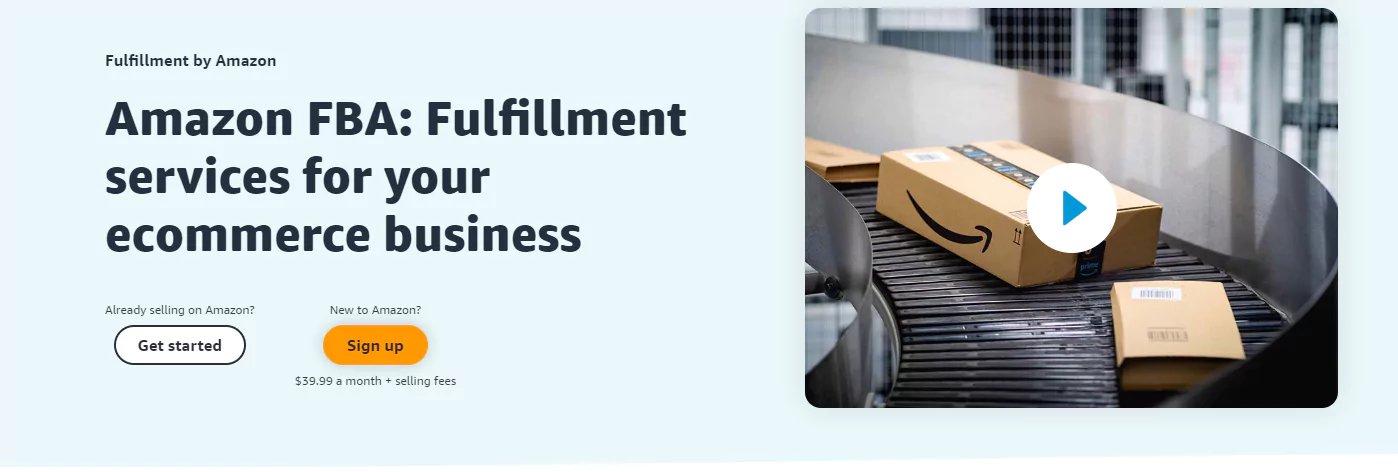
What Is Amazon FBA?
Amazon FBA is a handy service that gives sellers the opportunity to send their products to one of Amazon’s warehouses. Once there, any product will then be stored, packed, and shipped to customers who buy it.
This is in direct contrast to Amazon FBM (Fulfilled by Merchant) where sellers have to take care of the storage, packing, and shipping themselves.
How Does Amazon FBA Work?
Amazon FBA works by easily streamlining the selling process by allowing any FBA seller to simply send their products to Amazon. The e-commerce company will then handle the storage, packing, and shipping from then on.
This process helps sellers benefit from Amazon’s expertise in e-commerce selling and their impressive fulfillment network. Sellers should take advantage of this unique opportunity because it will allow them to spend less time storing and shipping their products, and more time focusing on key ways they can grow their business.
Specifically, Fulfillment By Amazon works as follows:
- Product Storage: Amazon FBA sellers ship their products to an Amazon Fulfillment Center where they are safely kept until a customer buys your product.
- Inventory Management: These Fulfillment Centers take care of the storage, packaging, and shipping of your inventory. Your products will be all ready to go whenever a customer orders one, allowing quick and painless deliveries.
- Order Placement: Speaking of orders, whenever a customer orders one of your products, Amazon will automatically take care of the entire process. This also includes payment processing.
- Find, Pack, and Ship: At an Amazon Fulfillment Center, Amazon staff members find your product, pack it up, and ship it to a customer’s home whenever it is purchased.
- Shipping and Delivery: By effectively utilizing its huge logistics network, Amazon is (more often than not) able to ensure reliable delivery times. Some orders can even be received by the customer hours after it is purchased.
- Fulfillment Fees: While there are many benefits of FBA, sellers will be required to pay storage, packing, and shipping fees for their products. The exact fee amount can vary depending on the specific dimensions of your inventory such as size, weight, and storage duration. Additionally, keep in mind that the per cubic foot fees can change based on the time of year.
- Seller Dashboard: Amazon sellers can and should utilize the Seller Dashboard to help them easily keep track of their inventory, monitor sales, and even access important reports through Amazon Seller Central.
- Prime Eligibility: When sellers use Amazon FBA, they are eligible for Amazon Prime, which can potentially lead to both increased visibility and customer trust.
- Global Selling: Sellers can even start to create a global audience that loves their products thanks to Amazon’s international fulfillment network.
Understanding Amazon FBA Fees: How Much Does Amazon FBA Cost?
There are many costs and expenses associated with Amazon FBA that new sellers should consider before choosing this option. Keep in mind that these can vary depending on certain factors including product size, weight, per cubic foot charges, and storage duration.
Check out some of the most important fees Amazon FBA sellers can expect:
- Fulfillment Fees: The particular fees cover the costs associated with storing, picking, packing, and shipping your inventory to customers around the world. They also can vary depending on the specific size and weight of the items. To make things easier for sellers, Amazon provides a useful fee schedule outlining the rates for each product category.
- Long-Term Storage Fees: In certain cases, parts of your inventory may remain within a fulfillment center for a prolonged period of time. In these instances, you may be charged additional fees that help encourage sellers to manage their existing inventory more effectively. However, there are some cases where FBA Onsite can apply, allowing some sellers to avoid these particular fees.
- Removal or Disposal Fees: If one of your products isn’t selling and you want to remove it from a fulfillment center, Amazon will charge you a fee that covers the cost of return shipping or proper disposal (if you want your product thrown away).
- Inventory Placement Service (Optional): This optional fee allows FBA sellers to send their entire shipment (regardless of size) to one fulfillment center rather than multiple ones. This can be a good idea if you’re concerned about losing track of your inventory. Also, since it is optional, additional fees will apply.
What Percentage Does Amazon FBA Take?
Amazon FBA takes a percentage from each sale in the form of two fees:
Referral Fees: Referral fees are calculated based on your item’s sale price—but exclude any taxes or shipping fees—and are charged by Amazon for facilitating the sale. This fee can vary depending on the specific product category, although they usually range from 6% to 45% of the item’s sale price.
Keep in mind that different product categories have varying fee structures, so we recommend that you check out Amazon’s helpful fee schedule to discover more details.
FBA Fee: FBA fees cover any storing, picking, packing, and shipping costs associated with your product. These fees also include a fulfillment fee—based on the item’s size and weight—and a storage fee—based on the volume in cubic feet—of your stored inventory.
Is Amazon FBA Worth It?
Yes, Amazon FBA is definitely worth it. With a host of benefits that allow sellers to scale their business, it’s a great choice for new and old entrepreneurs alike.
Since Amazon boasts a huge customer base spanning the entire globe, it can be hard for sellers to take advantage of the many opportunities this affords without FBA. When you’re an FBA seller, you can make your products visible more easily to this audience, leading to increased sales.
Further, the convenience that Amazon FBA offers its sellers may make it a valuable choice for entrepreneurs, although it’s important to take the time to research every aspect of the fulfillment method before diving in.
The Pros and Cons of Amazon FBA
Within the Amazon marketplace, sellers who make error after logistical error will seriously harm their business going forward. This is one of the reasons why many sellers are taking advantage of Amazon FBA, as they can focus on growing other aspects of their business without worrying about others.
However, it’s important to carefully weigh both the pros and cons of Amazon FBA. This will enable you to make as informed a decision as possible.
Pros
- Using Amazon’s Reach: It’s a fact that Amazon customers trust the e-commerce site to deliver reliable and quality items. This makes them feel comfortable with ordering from many different sellers on the platform, including you.
- Super-Fast Deliveries: With Amazon FBA, your fulfillment center-stored products can be sent to customers much more quickly than if they were kept at your home with FBM.
- Boost Your Amazon Rank: FBA sellers can experience a quicker route to popularity and visibility on the platform. This is because FBA products are only classified by price, and not by total price (including shipping costs) that non-FBA sellers must put down.
- Increased Buy Box Chance: The all-important Buy Box can go a long way to increasing your Amazon sales, and you can get more opportunities to win it with FBA.
- Provide Free Shipping: By offering free shipping to your customers, you can help ensure that they choose you for a certain product over a competitor that may not be utilizing FBA.
- Lower Operating Costs: Since you won’t have to worry about storage, staff, or management thanks to FBA, you’ll be able to more focus on delivering an increased number of goods, all the while increasing your sales.
- Reduced Inquiries: Amazon offers 24/7 support to all their FBA sellers (and FBA sellers’ customers), allowing you to avoid dealing with stressful fulfillment and shipping issues.
Cons
- Expensive Charges: Amazon FBA sellers will have to pay the fees associated with the program, but these can become costly, dissuading some sellers from joining Amazon FBA. Additionally, other FBA sellers experience reduced profits from their sales because of these (occasionally frustrating) fees.
- More Returns: With FBA, some sellers experience an increased number of item returns thanks to Amazon’s existing return policy. This is because Amazon FBA makes it easy for customers to return unwanted products to warehouses for free, which can be bad for sellers looking to reduce Amazon returns.
- Additional Storage Fees: Amazon will charge its FBA sellers additional storage fees if their inventory spends too much time in one of their fulfillment centers. This could end up negatively affecting your metrics for any seasonal Amazon products or slow-moving items you possess.
- Stressful Product Requirements: Amazon FBA adheres to very specific packaging and labeling requirements for any items entering one of their fulfillment centers, making the initial, pre-sale process much more exhausting and stressful.
- Hard-to-understand Sales Tax: Administered at the state level, sales tax (not to mention Amazon seller taxes) can be complicated to understand, even more so if your business is registered in one state and your inventory in another.
Understanding Amazon FBA Business Model Options
By selling FBA, entrepreneurs both new and old can experience enhanced business growth and opportunities. However, figuring out the correct business FBA business model can be challenging, to say the least. There are a handful of different methods you can use when building your Amazon business. Here is a quick look at some of the most popular:
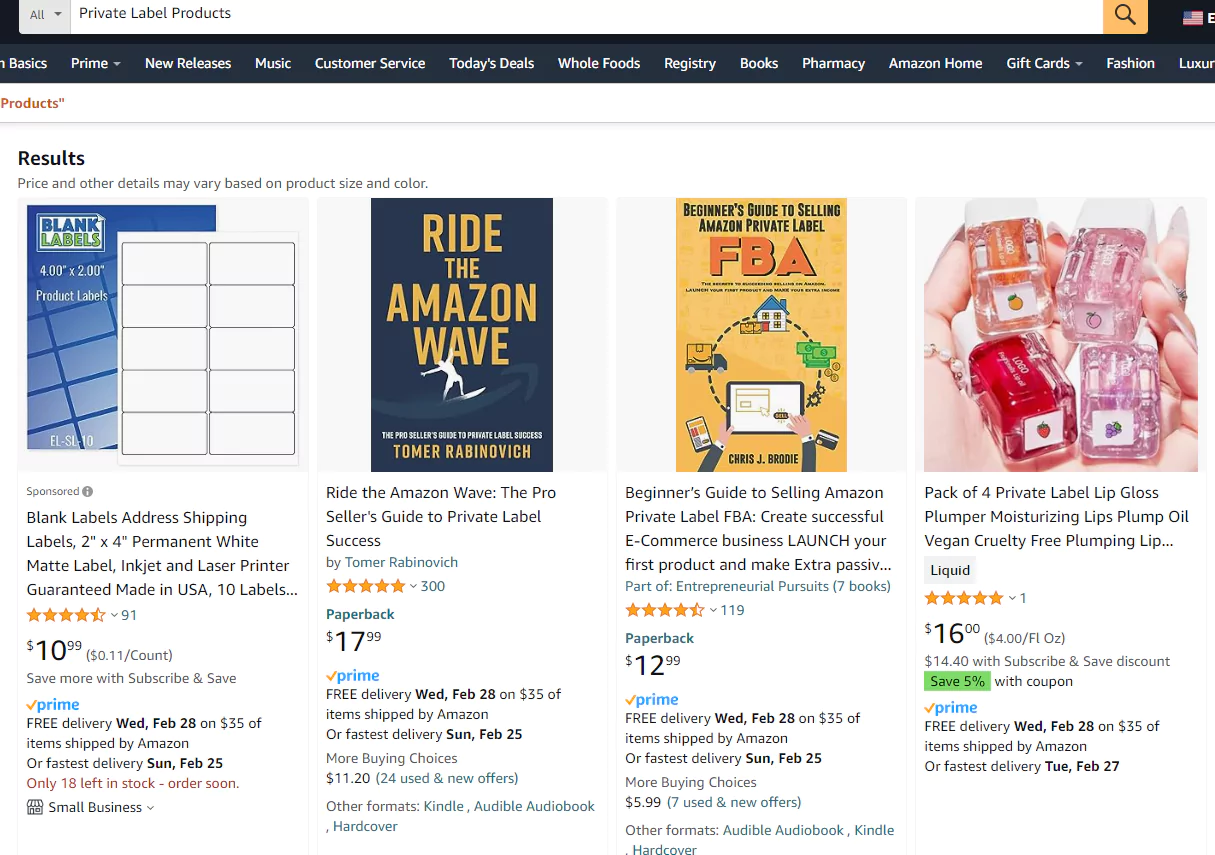
Private Label
By developing and selling branded products on Amazon, you can gain greater control over the design, quality, and pricing of those same items. Additionally, selling private label will also help you build brand recognition at an increased rate. However, keep in mind that this FBA model requires a significant upfront investment that may be prohibitive to some sellers.
Wholesale
Wholesale selling involves purchasing inventory in bulk from either manufacturers or distributors at wholesale prices, and then reselling the products for a profit on Amazon. This method is low risk, although you should anticipate less control over the quality of your products, lower margins, and the necessity to build relationships with reliable suppliers.
Online Arbitrage
Online arbitrage involves discovering low-priced or clearance items from other e-commerce websites and then reselling them on Amazon at higher prices. You won’t have to invest much upfront, but expect the profit margins to be small.
Retail Arbitrage
Almost exactly like online arbitrage, retail arbitrage sees you heading to brick-and-mortar establishments, looking for items on clearance, buying them, and then reselling them for a profit on Amazon, Walmart, or eBay. Also like online arbitrage, the initial investment required is low, but the extra work and low profit may not make this a viable long-term FBA method.
Dropshipping
Dropshipping is a near-autonomous Amazon selling method you can do without holding Amazon inventory yourself. This method works by finding a supplier, listing their product on Amazon, and, whenever a purchase is made, ordering it from the supplier. If this sounds easy, then you’re not entirely wrong, but many other sellers on Amazon have realized this too, so competition will be high.
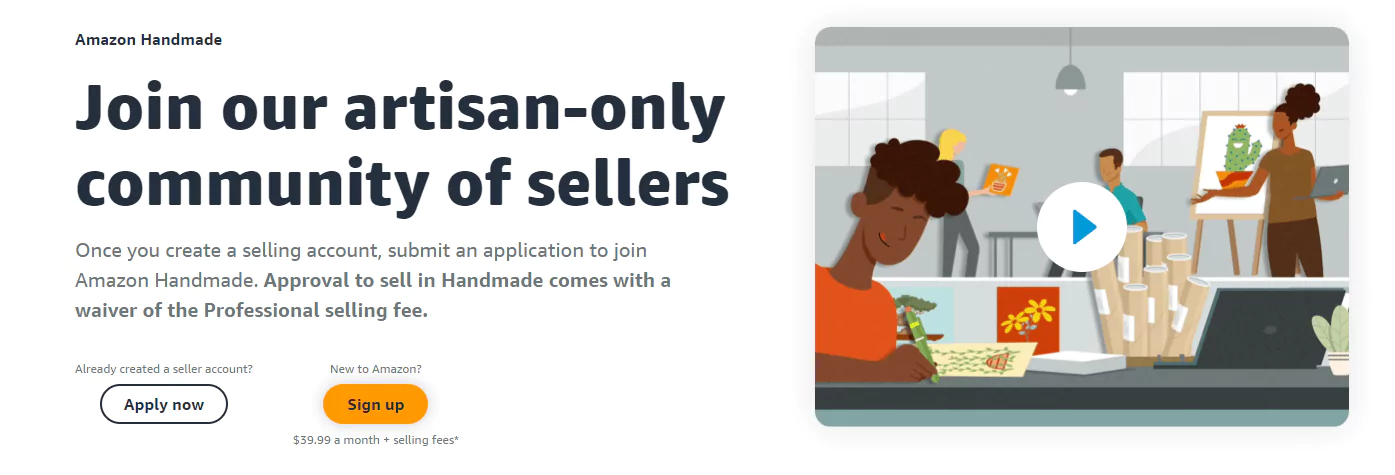
Handmade
This is a great option for creative individuals to make a profit selling their unique handcrafted items on Amazon. While Amazon Handmade does provide for creativity and personalization, it can be difficult to scale the business.
Considering Alternatives to Amazon FBA
It’s true that Amazon FBA has been and continues to be a popular choice for sellers on Amazon. However, you should also remember that there are alternate methods to selling on Amazon that don’t require FBA. It’s a good idea to look into these different approaches due to the fees and restrictions FBA sellers have to deal with. Take a look at some options to consider instead of selling with Amazon FBA:

Fulfilled by Merchant (FBM)
Fulfilled by Merchant (FBM) sellers are required to store and ship their products themselves rather than rely on Amazon to do it for them. This allows these particular sellers to have more control over their inventory, shipping costs, and customer service. The downside with FBM, though, is that most sellers will be unable to sell large quantities of inventory since the products will more than likely have to be stored in their homes.

Merch on Demand
Merch on Demand gives these sellers the opportunity to design their very own merch such as t-shirts and coffee mugs that are then produced and shipped by Amazon. Also, for every one of your items that sells, you’ll receive royalties that, if you have enough popular items for sale, can net you a tidy profit. However, this is considered a passive selling option and is more suited for creatives rather than business-focused sellers.
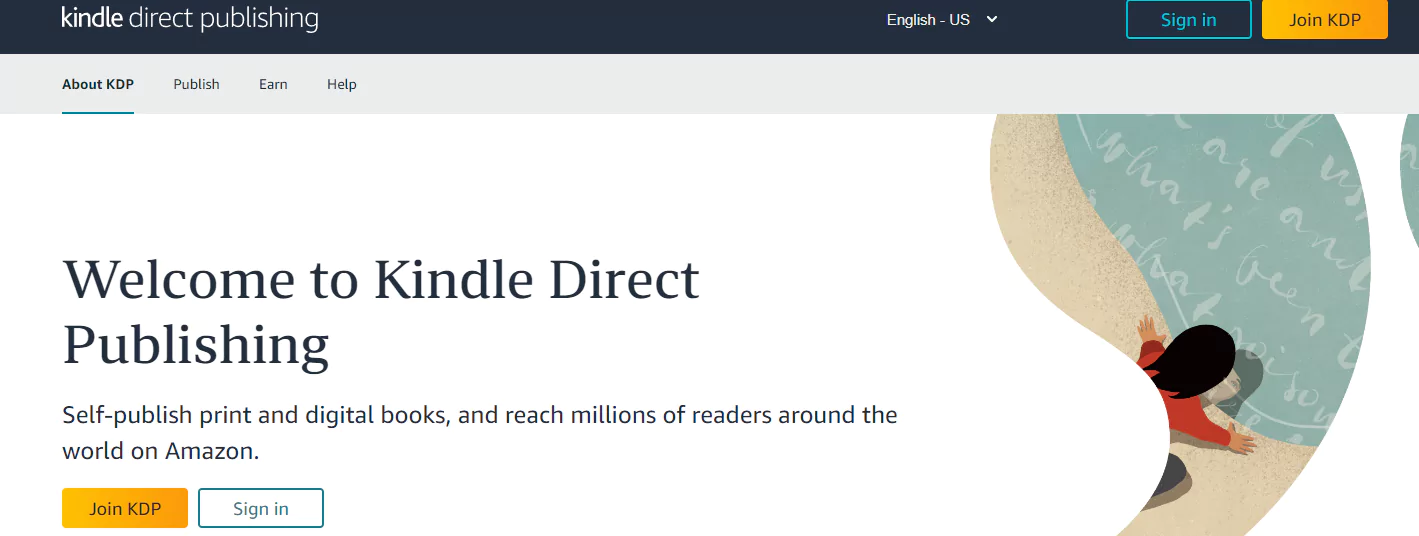
Digital Products
When selling digital products including ebooks, online courses, templates, and more, you’ll be able to sell them indefinitely while avoiding both production and fulfillment costs. For ebooks in particular, Amazon KDP gives you the chance to self-publish your book without having to go through a publishing company first.
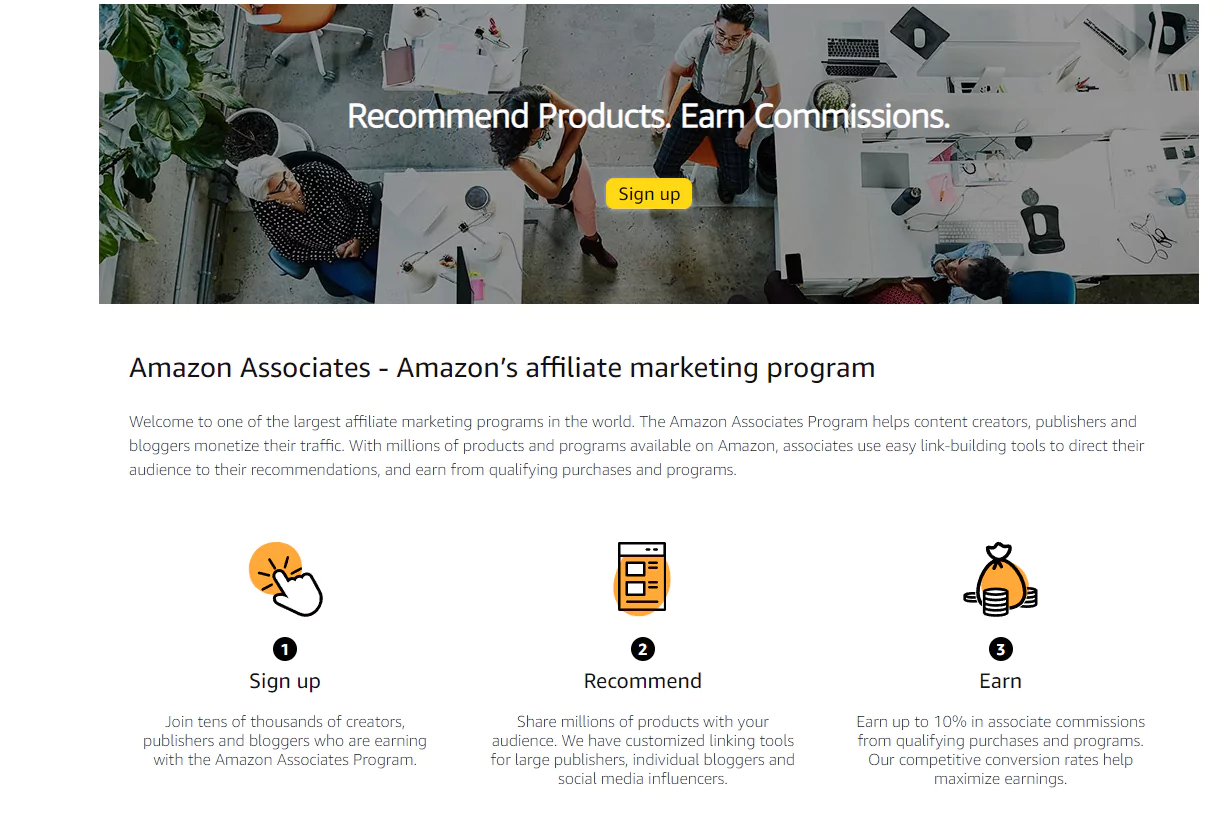
Amazon Affiliate Program
While not an Amazon selling method per se, you can earn money from Amazon using this method as an influencer (Amazon affiliate). After you become an affiliate, you won’t need to sell products, but you will be required to direct your social media audience to Amazon using your own affiliate link. Even though anyone can be an Amazon affiliate, it really works best for those who already have a social media following.
Amazon FBA Step by Step: How to Get Started
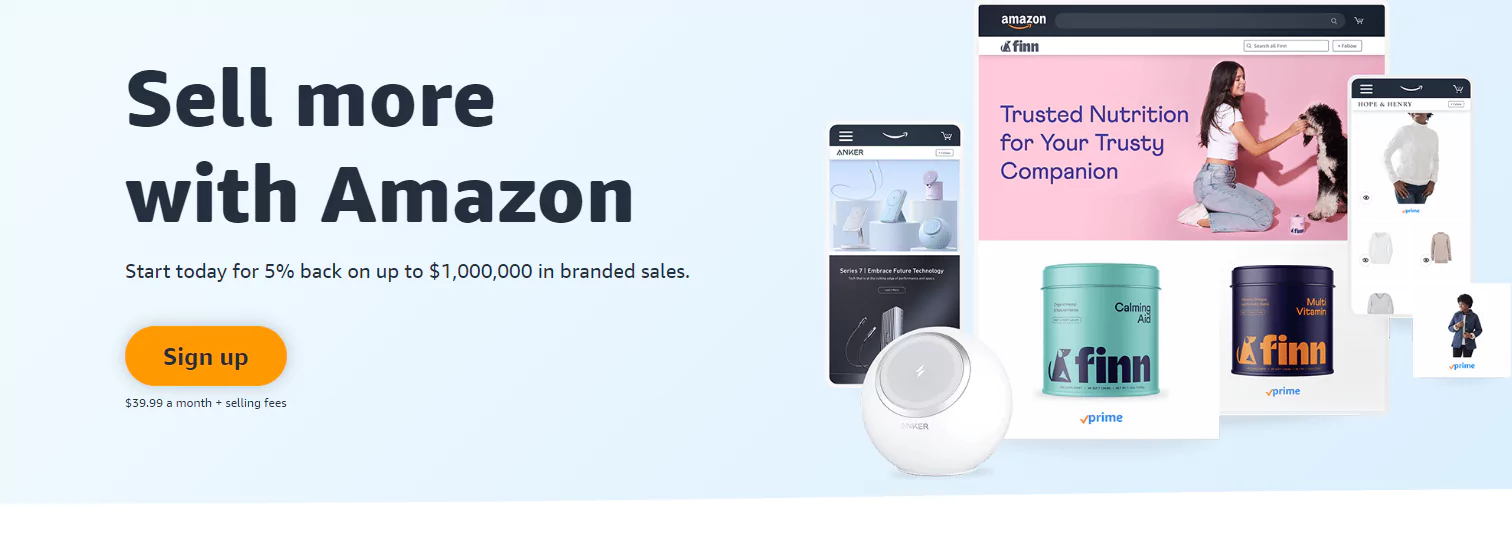
1. Create a Seller Account
The first thing you’ll have to do before selling Amazon FBA is create a seller account. To do this, you’ll be required to provide both contact and bank account information, tax information, and acknowledgment that you’ve read and agreed to Amazon’s terms of service.
Finally, you’ll want to choose either an individual or professional seller account. Think about your specific type of business before selecting one or the other.
2. Identify a Product
Once you’ve created an account, you’ll then need to find a viable product to sell. We recommended using Helium 10’s Black Box tool, which will allow you to easily locate highly profitable, low-competition products to sell on Amazon. Additionally, you’ll be able to then save, sort, and organize the products you’ve found for the future.
3. Source That Product & Ship to Amazon Warehouses
After you’ve found a winning product that you want to start selling, you’ll need to source it from a supplier; Alibaba or AliExpress are popular sourcing options that new and old sellers frequently use.
You can even be taken directly to Alibaba’s site when looking for potential products on Amazon by clicking one button within the Xray function of the free Chrome Extension.
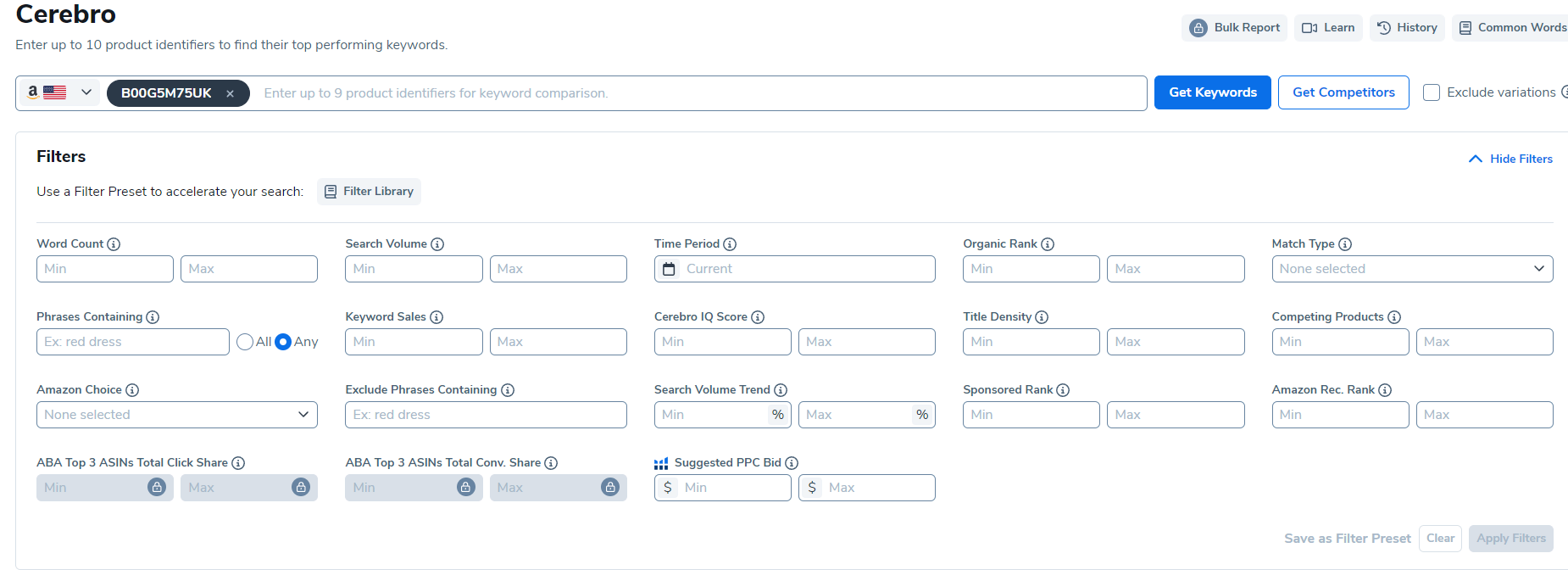
4. Build and Optimize Your Product Listings
Now that you’ve found both a product and supplier, it’s time to optimize your product listing with SEO keywords. Not sure where to find these keywords? No problem! By using either Magnet or Cerebro, you can quickly gather relevant keywords which you can then plug into your listing.
These keywords will allow your product to gain visibility on Amazon and will be seen more often by potential customers.
5. Run Amazon PPC Ads
Since it can still take some time for your product to gain lots of visibility, it’s recommended to run PPC ads for your items. During this process, you’ll be able to set up PPC campaigns for popular keywords you’ve bid on to get your product to show up in Amazon searches. This works even for products that are completely new on the platform.
Additionally, you can further optimize your ads and PPC strategies by closely monitoring both performance data and ACoS while slowly including more keywords over time.
6. Build Reviews
The greater number of Amazon reviews you have for your product, the better. This is because reviews help boost both conversion rates and search rankings, two aspects that are crucial for Amazon success. You can help speed this process by asking your satisfied customers for reviews after every purchase. It’s also a good idea to learn from both negative and positive reviews to help refine your product, helping it perform even better.
7. Monitor
Always keep an eye on important FBA metrics such as inventory levels, sales, advertising spend, your Buy Box percentage, current keyword rankings, and more.
Using these above metrics, you can better adjust your future strategies to continue growing and expanding your e-commerce business.
8. Test New Products & Scale
Once you’ve achieved success with your first few products, we recommend that you test new ones that you’re planning to sell. Always look to expand to more listings while taking advantage of Amazon FBA features like bundling and variations when possible.
If your business starts to expand more rapidly than anticipated (not a bad thing!), then also consider hiring additional help in order to scale your business and products effectively.
Key Recommendations to Be Successful With Amazon FBA
1. Be Willing to Invest 10-20k
In order to put yourself in the best position when selling Amazon FBA, you’ll want to invest a sizable amount at the start of your venture—think $10,000-$20,000. This significant fee will help cover your inventory, photos, packaging, shipping, and any other startup costs that may arise.
2. Sell High-Quality Products
By focusing on sourcing top selling products from reputable suppliers, you can help maximize your sales for a great ROI down the line.
3. Price Your Product Competitively
Be sure to effectively utilize Amazon’s unique pricing tools to help ensure that you competitively price your products. Additionally, be aware that, in some cases, the lowest-priced item often wins the Buy Box, but lower prices also mean lower profit margins. Before pricing your product, make sure to research the e-commerce landscape and then decide what your strategy should be.
4. Provide Excellent Customer Service
It’s a fact that providing great customer service is remembered by your buyers. Make sure to always respond to customer messages promptly, don’t hesitate to issue refunds or returns, and follow up with the customer after every complaint to ensure the issue is resolved.

5. Set Up Amazon Brand Registry & the Amazon Vine Program
Gain more direct power over your listings while fighting off counterfeiters by setting up Amazon Brand Registry.
You should also seriously consider enrolling in the Amazon Vine Program in order to gain reviews more quickly than usual.

6. Manage Inventory Closely
Help ensure that your fulfillment method is under control by using Helium 10’s Inventory Management tool. This operational software will allow you to keep a close watch on your stock so you can avoid stock-outs and over-ordering. It’ll also let you quickly complete supplier orders while sending your inventory straight to Amazon.
7. Leverage A+ Content & High-Quality Product Images
Listing photos are incredibly important on Amazon, so take the time to invest in professional product photography in order to help optimize your listing for A+ content. With more fleshed-out and enhanced detail pages, you’ll be able to boost your conversion rates, leading to more sales.
8. Run Ads to Achieve Sales Velocity
Since it can sometimes take many sales to boost your rank on Amazon, many sellers choose to run sponsored product and headline search ads in order to achieve visibility for their product. This is especially helpful for those who are launching a new product, although it’s also important for older items, as well.
9. Ask for Reviews to Improve Your Listing Quality
You should never be afraid to ask for reviews from satisfied customers. They don’t just look good on your listing, but they also serve to show Amazon that your product is great. This, in turn, will make Amazon boost your ranking and visibility.
Conclusion
Amazon FBA can be a massive game changer for sellers both new and old in the growing e-commerce marketplace. FBA sellers can effectively utilize Amazon’s incredibly large infrastructure, streamline many of their daily operations, reach a huge customer base, and benefit from both shipping and Amazon Prime.
However, while it is more than possible to achieve success on Amazon as an FBA seller, you’ll need to understand the costs, requirements, and all the daily activities involved in order to prosper.
No matter if you’re a newly minted entrepreneur or an old hand in e-commerce, FBA provides a proven pathway to success to those who are willing to work for it.
Frequently Asked Questions
Achieve More Results in Less Time
Accelerate the Growth of Your Business, Brand or Agency
Maximize your results and drive success faster with Helium 10’s full suite of Amazon and Walmart solutions.

